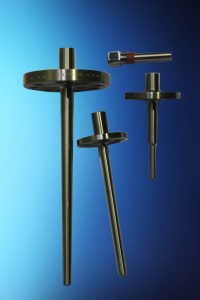
Making Sense of Sensors Part 8- Type R
Thermocouple Type R: Types R thermocouples, (Platinum vs. 13% Rhodium/Platinum), are usable up to 1480°C (2,700°F). They are extremely stable but reducing atmospheres are particularly damaging.
Call us
FROM OUR BLOG

Thermocouple Type R: Types R thermocouples, (Platinum vs. 13% Rhodium/Platinum), are usable up to 1480°C (2,700°F). They are extremely stable but reducing atmospheres are particularly damaging.

Thermocouple Type S: Platinum/10% Rhodium positive leg, and a pure platinum negative leg. The temperature range for Type S is 0 – 1450°C (32 –

Thermocouple Type T: Type T (Copper-Constantan) thermocouples are suited for measurements in the −200 to 350°C (-330 to 660°F) range. They are often used as a

The table below shows a summary of the Sense of Sensors 10 Part guide on the different types of Thermocouples. For assistance in choosing the

Service Life Useful thermocouple life is a difficult prediction to make, even when most of the details of an application are known. And unfortunately, such

Thermocouple Type B: Platinum – 30% Rhodium (+) vs. Platinum – 6% Rhodium (-) With a general application range from 870 – 1700°C (1600 –

Thermocouple Type C: Type C (Tungsten 5% Rhenium – Tungsten 26% Rhenium) thermocouples are suited for measurements in the 0 – 2320°C (32 – 4200°F) range.

Thermocouple Type E: Type E (Chromel®/Constantan) thermocouple is composed of a positive leg of Chromel® (nickel/10% chromium) and a negative leg of Constantan (nickel/45% copper). The

When installing sensors in a hazardous area, there is a requirement to install a sensor that is suitable and approved for use in that hazardous

Thermowells are recommended whenever a temperature element is to be inserted into a process where corrosion, pressure, abrasion, or shear forces may threaten the life
Copyright © 2022 Created by Pepper Digital
Disclaimer – Images for illustrative purposes only and may not be representative of the actual resolution of the camera shown.